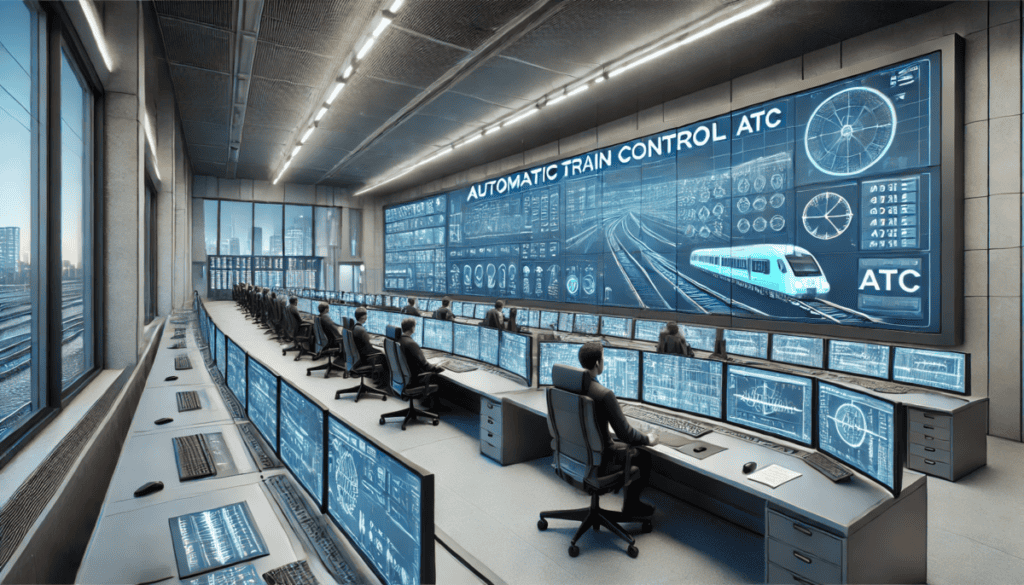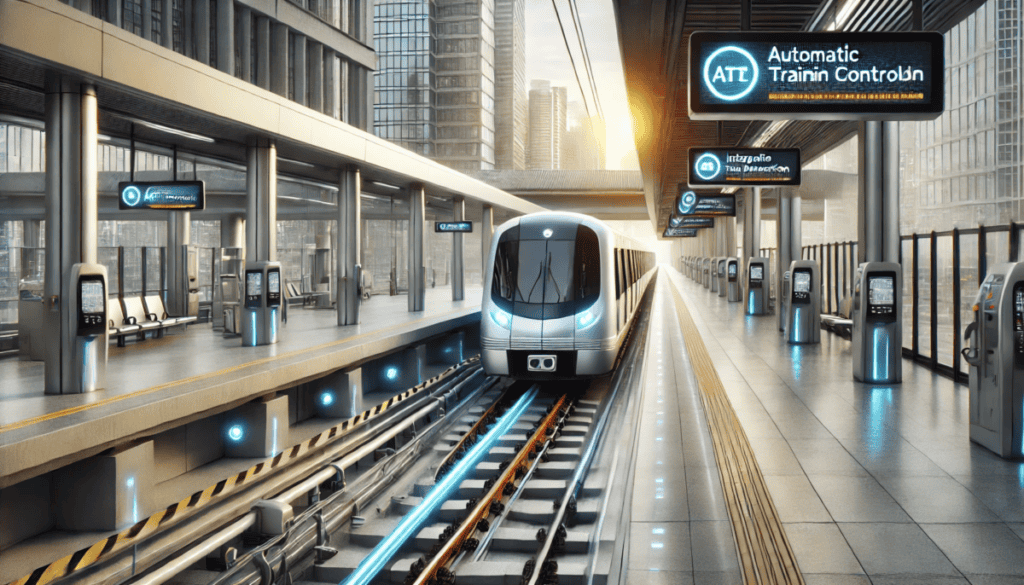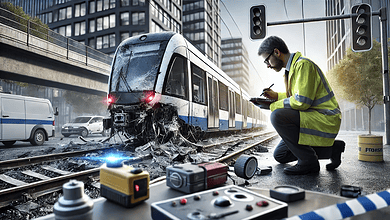Light Rail Technology Expert Witness: Evolution of Safety

Overview of Light Rail Technology Advancements
Introduction to Light Rail Systems and Their Role in Urban Transportation
Light rail systems have become a cornerstone of urban transportation, offering an efficient, reliable, and environmentally friendly mode of transit.
As cities continue to grow and face the challenges of congestion and pollution, light rail systems provide a sustainable alternative to traditional road and rail transport.
These systems, characterized by their flexibility and ability to operate on shared tracks, have evolved significantly.
Historical Development of Light Rail Technology from Early Trams to Modern Systems
The journey of light rail technology began in the 19th century with the introduction of horse-drawn trams. These early systems, though rudimentary, laid the foundation for modern urban rail transport.
The advent of electric trams in the late 19th and early 20th centuries marked a significant technological leap, enhancing the efficiency and reach of urban transit systems.
Further advancements were made in the mid-20th century by introducing more sophisticated propulsion systems, improved track designs, and better vehicle construction materials.
During this period, the shift from manually operated systems to automated and semi-automated operations began, paving the way for the high-tech light rail systems we see today.
Key Technological Advancements in Light Rail
The evolution of light rail technology can be traced through several key advancements:
- Propulsion Systems: The transition from horse-drawn carriages to electric trams revolutionized urban transit. Modern light rail systems utilize advanced electric propulsion systems that are more efficient and environmentally friendly. Innovations in battery technology and hybrid propulsion systems have further enhanced the performance and sustainability of light rail vehicles.
- Automation: Automation has played a crucial role in improving the safety and efficiency of light rail systems. Automated control systems, such as automatic train control (ATC), ensure precise control over train movements, reducing the risk of human error and enhancing operational reliability.
- Materials: Advances in materials science have led to the development of lighter, stronger, and more durable materials for light rail vehicles. These materials improve the performance and safety of the vehicles and contribute to lower maintenance costs and longer service life.

Understanding Automatic Train Control (ATC)
Automatic Train Control (ATC) is a sophisticated system used in modern rail networks to enhance safety, efficiency, and overall performance.
ATC integrates several technologies to automate various aspects of train operations, providing a seamless and reliable transportation service. Consulting a light rail technology expert witness can provide deeper insights into the implementation and benefits of ATC systems.
Components of ATC
ATC systems comprise three main components:
- Automatic Train Protection (ATP): ATP is primarily focused on safety. It ensures trains operate within safe speed limits and maintains safe distances between trains to prevent collisions. ATP systems use onboard and wayside equipment to continuously monitor train speed and position, automatically applying brakes if a train exceeds speed limits or enters a danger zone. A light rail technology expert witness can explain the intricacies of ATP implementation and its impact on rail safety.
- Automatic Train Operation (ATO): ATO automates the operational aspects of train control. This includes starting, accelerating, cruising, and stopping the train according to a predefined schedule. ATO systems use advanced algorithms to optimize train performance, manage energy consumption, and ensure punctual service. A light rail technology expert witness can provide expert testimony on how ATO systems enhance operational efficiency and reduce human error).
- Automatic Train Supervision (ATS): ATS manages and supervises train operations across the network. It coordinates train schedules, monitors train movements, and adjusts operations in real-time to minimize delays and optimize traffic flow. ATS plays a crucial role in maintaining the overall efficiency and reliability of the rail network. A light rail technology expert witness can elaborate on the role of ATS in integrating various components of ATC for optimal performance.

Functionality and Benefits
Route Setting and Train Spacing: ATC systems determine optimal train routes based on traffic conditions, track availability, and scheduling constraints.
ATC maximizes track utilization by regulating train spacing while maintaining safe distances between trains.
This helps reduce congestion and improve the rail network’s overall throughput. A light rail technology expert witness can discuss how these functionalities are implemented and their impact on network efficiency.
Automatic Signaling: ATC integrates with signaling systems to control trackside signals and switches, ensuring trains follow their designated routes safely and efficiently.
This automation reduces the likelihood of human error, enhancing the safety and reliability of train operations. Expert witnesses in light rail technology can provide detailed insights into integrating signaling systems with ATC.
Technological Integration: ATC systems rely on a combination of train detection systems, wayside equipment, and trainborne equipment.
Train detection systems, such as track circuits and axle counters, provide precise location data. Wayside equipment, including signals and switches, is managed by interlocking systems to control train movements.
Trainborne equipment, like onboard computers and speed sensors, communicates with wayside equipment to ensure coordinated control of train operations. A light rail technology expert witness can explain the technological integration required for effective ATC implementation.
Challenges and Future Trends
Integration and Compatibility: Implementing ATC systems requires careful integration with existing infrastructure and rolling stock.
Compatibility issues can arise, necessitating retrofitting older trains with new ATP systems and ensuring seamless communication between different components. A light rail technology expert witness can address these challenges and recommend solutions.
Operational Changes: The transition to ATC involves significant changes in operational procedures.
New rules and training programs are essential to ensure personnel can effectively manage and operate the automated systems. Consulting a light rail technology expert witness can help understand operational changes and training requirements.
Future Trends: With advancements in artificial intelligence (AI) and machine learning (ML), the future of ATC looks promising.
These technologies can further enhance the predictive capabilities of ATC systems, allowing real-time adjustments based on dynamic conditions such as weather, track conditions, and passenger demand.
Additionally, moving block systems, which provide dynamic train separation, are expected to improve capacity and efficiency further. A light rail technology expert witness can provide insights into these emerging trends and their potential impact on rail operations.
ATC represents a critical evolution in railway technology, integrating safety, operational efficiency, and advanced automation to meet the demands of modern rail transportation.
As technology advances, consulting a light rail technology expert witness will be essential in navigating the complexities of ATC systems and ensuring their successful implementation and operation.

The Role of a Light Rail Technology Expert Witness in Documenting and Assessing Advancements
A light rail technology expert witness plays a vital role in documenting and assessing the technological advancements in light rail systems.
These experts provide valuable insights into developing and implementing new technologies, ensuring they meet industry standards and regulatory requirements.
Their expertise is crucial in legal and regulatory proceedings, where they provide objective analysis and testimony on the safety and effectiveness of light rail technologies.

Impact on Safety and Efficiency
Analysis of How Technological Advancements Have Improved Safety
Technological advancements have profoundly impacted the safety of light rail systems. Automation, real-time monitoring, and advanced control systems have significantly reduced the risk of accidents and improved the overall safety of operations.
Role of Automated Control Systems and Real-Time Monitoring
Automated control systems, such as ATC, play a critical role in enhancing the safety of light rail operations.
These systems ensure precise control over train movements, preventing collisions and derailments. Real-time monitoring systems continuously track the condition of the tracks and vehicles, allowing for timely maintenance and repairs, thus preventing potential accidents.
Contributions of a Light Rail Engineering Expert
A light rail engineering expert is instrumental in implementing safety features in modern light rail systems. These experts work closely with engineers and designers to develop and integrate advanced safety technologies. Their expertise ensures that the safety features are effective and compliant with industry standards and regulations.
Evaluation of Safety Improvements
Several safety improvements have been made possible by technological advancements:
- Collision Avoidance Systems: These systems use sensors and automated control to detect and prevent potential collisions. By automatically applying brakes and controlling train speed, collision avoidance systems have significantly reduced the risk of accidents.
- Improved Braking Mechanisms: Modern light rail vehicles have advanced braking systems that provide more reliable and efficient braking. These systems include regenerative braking, which improves braking performance and contributes to energy savings.
- Advanced Signaling: Integrating advanced signaling systems has enhanced the communication between trains and control centers. These systems ensure that trains operate within safe parameters and respond promptly to any changes in track conditions or operational requirements.
Case Studies Showcasing Public Transit Safety Advancements
These case studies serve as theoretical examples to demonstrate potential scenarios and outcomes. While they draw on elements that could be seen in real cases, they remain entirely speculative and are used purely for educational and illustrative purposes.
Several case studies highlight the impact of technological advancements on public transit safety:
- City A: Implementing automated control systems in City A’s light rail network significantly reduced accidents—the system’s ability to monitor and control train movements in real time ensured high operational safety.
- City B: In City B, the introduction of collision avoidance systems and improved braking mechanisms resulted in a notable decrease in collision incidents. The real-time monitoring of vehicle conditions also allowed for proactive maintenance, further enhancing safety.
- City C: Advanced signaling systems in City C’s light rail network improved communication and coordination between trains and control centers. This integration resulted in smoother operations and a marked improvement in overall safety.

Future Trends
Exploration of Emerging Technologies
The future of light rail technology is poised for further advancements driven by emerging technologies. These innovations promise to enhance safety and efficiency, making light rail systems even more attractive for urban transportation.
Predictions from Rail System Performance Evaluation Experts
Rail system performance evaluation experts predict several key trends in the future of light rail technology:
Artificial Intelligence (AI): AI is expected to play a significant role in the future of light rail systems. AI-powered predictive maintenance systems can anticipate failures and schedule repairs before issues arise, reducing downtime and enhancing safety. Furthermore, AI can optimize train scheduling and routing, improving efficiency and reducing delays.
Internet of Things (IoT): Integrating IoT devices in light rail systems will enable real-time data collection and analysis. This connectivity will improve the monitoring of vehicle and track conditions, leading to more efficient maintenance and operations. IoT sensors can also enhance passenger experiences by providing real-time updates on train schedules and occupancy levels.
Renewable Energy Sources: The shift towards renewable energy sources, such as solar and wind power, will make light rail systems more sustainable. Energy storage and management innovations will ensure a reliable, eco-friendly power supply for light rail vehicles. Utilizing renewable energy reduces the carbon footprint of light rail systems and promotes environmental sustainability.
Autonomous Operation: Autonomous operation represents the pinnacle of light rail technology advancements. By leveraging advanced technologies such as AI, machine learning, and sensor fusion, light rail systems can operate with minimal human intervention.
Autonomous trains can improve safety by eliminating human errors and optimize efficiency by adjusting real-time speeds and routes based on traffic conditions and demand. Additionally, autonomous systems can facilitate better resource management, reduce operational costs, and enhance service reliability.
Potential Challenges and Solutions in Adopting New Technologies
While the adoption of new technologies promises significant benefits, it also presents several challenges:
- Integration with Existing Systems: Integrating new technologies with existing infrastructure can be complex and costly. Careful planning and phased implementation can help mitigate these challenges.
- Regulatory Compliance: Ensuring that new technologies comply with industry standards and regulations is essential. Collaboration between technology developers, industry experts, and regulatory bodies can facilitate compliance.
- Cybersecurity: As light rail systems become more connected, cybersecurity becomes a critical concern. Implementing robust security measures and continuous monitoring can protect against cyber threats.
Innovations in Passenger Experience
Emerging technologies are also poised to enhance the passenger experience in light rail systems. High-speed Wi-Fi, real-time travel information, and advanced ticketing systems are some of the innovations that will make light rail travel more convenient and enjoyable for passengers.
Furthermore, integrating smart technologies can provide personalized travel experiences, improve accessibility for passengers with disabilities, and enhance overall satisfaction.
Environmental Sustainability
The future of light rail technology also emphasizes environmental sustainability. Adopting renewable energy sources, such as solar panels and wind turbines, will reduce the carbon footprint of light rail systems.
Energy-efficient designs, including regenerative braking systems and lightweight materials, will further contribute to sustainability efforts. By prioritizing green technologies, light rail systems can significantly reduce urban pollution and promote eco-friendly transportation options.

Upgrades in Light Rail Technology
Recap of Key Technological Advancements
The evolution of light rail technology has brought significant advancements that have improved safety and efficiency. These technological innovations have transformed urban transportation from early trams to modern automated systems.
Role of Experts in Evaluating and Implementing Technologies
Experts such as light rail technology expert witnesses and light rail engineering experts play a crucial role in evaluating and implementing new technologies. Their expertise ensures these technologies meet industry standards, enhance safety, and improve operational efficiency.
Ongoing Evolution of Light Rail Technology
The ongoing evolution of light rail technology continues to shape the future of urban transportation. By embracing emerging technologies and addressing potential challenges, light rail systems can achieve greater safety, efficiency, and sustainability, benefiting cities and residents.

With over forty years in public transit, Timothy Borchers is a preeminent international transit and light rail expert witness specializing in accident investigation, system safety, and industry compliance. He regularly authors authoritative articles on advanced light rail topics.

